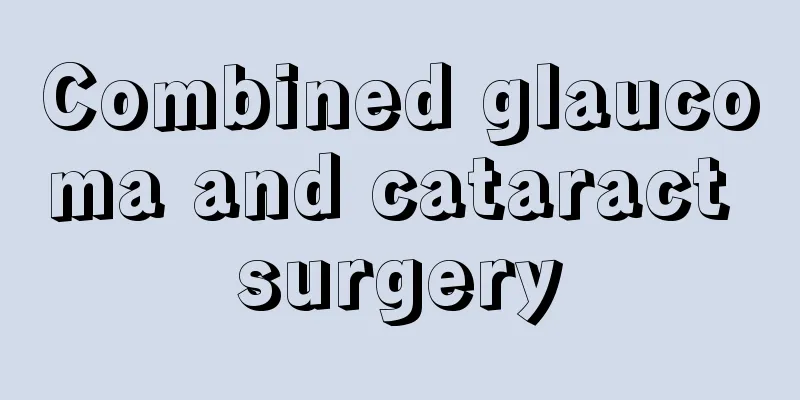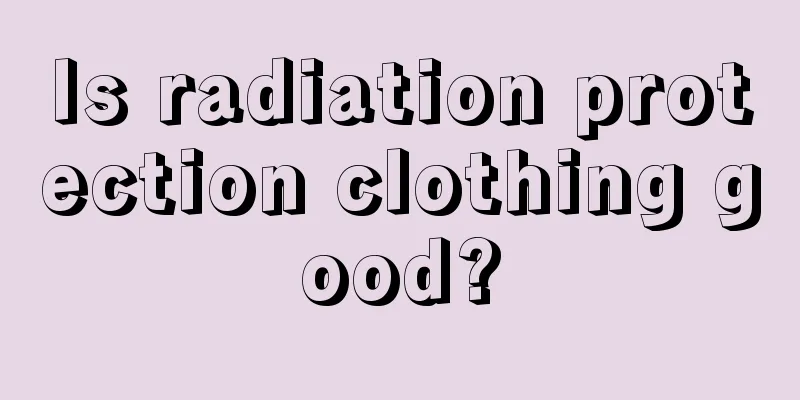Combined glaucoma and cataract surgery

|
Combined glaucoma and cataract surgery is a surgery chosen by patients who have both glaucoma and cataracts. It treats two eye diseases at the same time. Combined surgery for glaucoma and cataract is currently relatively mature and stable, so patients can rest assured. Glaucoma and cataracts are both common eye diseases and have a significant impact on vision. In the past, surgical treatment for glaucoma combined with cataracts was often performed in two stages: anti-glaucoma surgery was performed first, and cataract surgery was performed at an appropriate time after the successful surgery. Although intraocular pressure could be better controlled in this way, the second surgery was accompanied by the risk of secondary complications. Some glaucoma patients complained that their vision was getting worse after surgery. In fact, an important reason for this was that glaucoma surgery accelerated the development of cataracts. Now with the development and improvement of ophthalmic microsurgery technology, the combined surgery of glaucoma and cataract to cure two diseases at one time has been widely used. The advantages of the combined approach are that it not only controls intraocular pressure, but also restores vision, allowing patients to avoid the pain and trouble of multiple surgeries, while also reducing the financial burden on patients. Combined glaucoma and cataract surgery is suitable for : 1. Glaucoma and cataracts have their own indications if they are operated on separately. 2. The intraocular pressure of open-angle glaucoma can be controlled by combined medication (using two or more anti-glaucoma eye drops). Combined glaucoma and cataract surgery is recommended during cataract surgery. 3. If glaucoma cannot be controlled by medication, anti-glaucoma surgery is required. Although the visual acuity is greater than 0.4, the opacity of the lens has affected the pupil area. In this case, combined glaucoma and cataract surgery is suitable. 4. Cataract surgery has been performed on the fellow eye. 5. If simple glaucoma surgery is performed on primary angle-closure glaucoma, the possibility of complications is expected to be high, or related complications have already occurred in the fellow eye. Indications for combined glaucoma and cataract surgery : 1. Glaucoma is diagnosed to require surgery, and cataracts are diagnosed to have reached the stage of surgical treatment. 2. The diagnosis of glaucoma clearly indicates that surgery is required, but the diagnosis of cataract clearly indicates that surgery is not required. However, if simple glaucoma filtration surgery is performed, the possibility of complications is high or related complications have already occurred in the fellow eye. 3. Patients with a clear diagnosis of glaucoma can currently receive conservative treatment, but those with severe cataracts require surgery. Surgical methods for glaucoma and cataract surgery At present, there are two methods of combined glaucoma and cataract surgery. One is cataract phacoemulsification surgery combined with glaucoma angle separation surgery, and the other is cataract phacoemulsification surgery combined with glaucoma filtration surgery. The specific surgical approach you choose depends mainly on the following factors: The length of glaucoma history, the length of time glaucoma medication is used, the amount of glaucoma medication used and the response to the medication, the frequency and severity of glaucoma attacks, the degree of adhesion of the chamber angle, the thickness of the lens, the depth of the anterior chamber, the severity of the visual field, the degree of optic nerve atrophy, the control of intraocular pressure before surgery, etc. The advantages of combined glaucoma and cataract surgery in treating primary angle-closure glaucoma are obvious, but due to the difficulty of the operation, many problems that do not exist in simple glaucoma or cataract surgery must be faced during the operation. The surgeon must have rich theoretical knowledge and skilled surgical techniques, as well as solid glaucoma-related knowledge and cataract surgery skills, as well as the ability to deal with complications during and after the operation. |
>>: Which lens is better for cataract surgery
Recommend
What medicine is effective for depression?
In modern life, more and more people are affected...
Causes and treatments of sore throat after eating
We all know about getting angry in life, especial...
How to reduce fever quickly after catching a cold
It is actually very common to catch a cold and de...
What are the symptoms of hemophilic syndrome?
Hemophagocytic syndrome is a relatively common ce...
People can only prevent laryngeal cancer if they pay attention to its causes
Now, with the increasing incidence of laryngeal c...
Five types of white secretions appearing in the corners of the eyes
With the increase of life pressure, it may be the...
What are the reasons for a long belly
There are many people with big bellies nowadays, ...
What are the methods to treat tongue ulcer
The most common oral problems, besides toothache,...
Shrimp skin can easily cause cancer if left for a long time
Many of us like to add dried shrimps when making ...
The head is sweating but the body is not
Sweating on the head but not on the body generall...
Conservative treatment of distal fibula fracture
Distal fibula fracture is also quite common in li...
What does a positive EB virus antibody mean?
Viruses are more harmful than bacteria. Bacteria ...
Can nasopharyngeal carcinoma be cured by mid-term radiotherapy and chemotherapy?
Can nasopharyngeal carcinoma be cured by mid-term...
What are the symptoms of cervical cancer squamous cell carcinoma
Symptoms of squamous cell carcinoma of the cervix...
What are the causes of spasmodic torticollis
Spasmodic torticollis is a common disease that ma...









